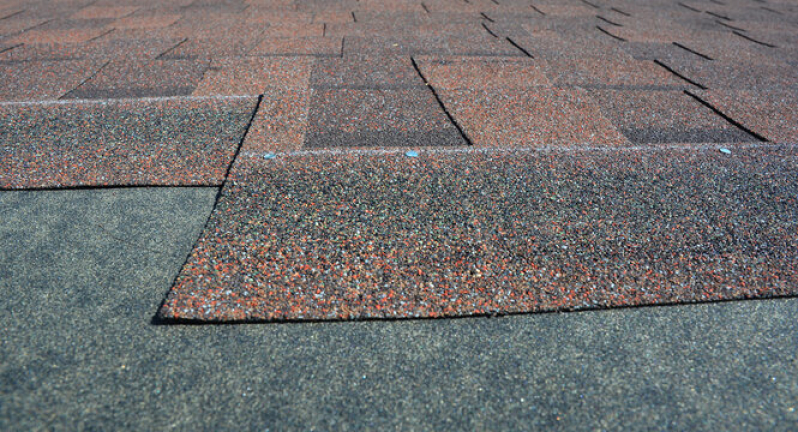When people think about roofing, shingles or metal panels are often the first things that come to mind. However, there’s an unseen layer beneath them that plays a crucial role in protecting your home. Roofing underlayment acts as a shield against moisture, leaks, and long-term damage, ensuring the overall strength of your roof.
At Maycon Construction Services, we emphasize the importance of roofing underlayment in every roofing project. A strong roof isn’t just about what you see on the surface—it’s about what’s underneath.
Protecting Your Home from Water Damage
1. Preventing Leaks and Moisture Buildup
Your roof is constantly exposed to harsh weather, from heavy rain and snow to strong winds. Even the most durable shingles can shift, crack, or lift over time, allowing water to seep through. Underlayment provides a critical layer of protection by:
- Creating a waterproof barrier between the roof deck and outer materials
- Preventing leaks caused by wind-driven rain or melting snow
- Reducing the risk of moisture buildup, which can lead to mold and wood rot
Homes without proper underlayment are far more vulnerable to interior leaks and costly structural damage.
2. Providing Extra Defense Against Storms
Huntington, WV, experiences unpredictable weather, making extra protection essential. Underlayment acts as a second line of defense by:
- Preventing water infiltration if shingles are damaged or blown off
- Helping secure roofing materials in high-wind conditions
- Offering temporary waterproofing, reducing interior damage risks
For homeowners planning a New Roof Installation, investing in quality underlayment is key to ensuring long-term protection.
Choosing the Right Roofing Underlayment
1. Felt Underlayment: A Traditional and Cost-Effective Option
Felt underlayment, also known as tar paper, has been a staple in roofing for decades. It provides basic protection against water infiltration and is widely used in residential roofing.
- Made from organic materials soaked in asphalt for water resistance
- Available in 15-pound and 30-pound options, with the latter offering more durability
- Provides moderate moisture protection but can absorb water over time
While felt underlayment works well for many homes, newer synthetic materials offer greater long-term performance.
2. Synthetic Underlayment: Lightweight and Highly Durable
Modern synthetic underlayment is made from high-performance polymers, providing superior strength and resistance to water.
- Lighter and easier to install than felt
- More resistant to tearing, ensuring better coverage
- UV-protected, allowing it to last longer before shingles are installed
Many homeowners opt for synthetic underlayment when considering a New Roof Installation due to its long lifespan and reliability.
3. Rubberized Asphalt Underlayment: Maximum Waterproofing
For homes in areas prone to heavy rainfall or snow, rubberized asphalt underlayment offers the highest level of protection.
- Self-sealing backing that forms a watertight seal around nails and fasteners
- Ideal for low-slope roofs and high-risk leak areas
- Excellent performance in extreme weather, preventing ice dams and water infiltration
While it comes at a higher cost, the added protection makes it a worthwhile investment for homes in harsh climates.
Ensuring Proper Installation for Maximum Protection
1. Securing a Smooth and Even Application
For underlayment to perform effectively, it must be installed correctly. Poor installation can lead to trapped moisture, weak spots, and premature roof failure. Key installation steps include:
- Laying underlayment evenly across the roof deck
- Overlapping edges properly to prevent water seepage
- Securing with fasteners at the correct intervals to keep it in place
Our team at Maycon Construction Services follows industry best practices to ensure every New Roof Installation is completed with precision.
2. Working with Other Roofing Components
Underlayment works in combination with other roofing elements to create a secure and watertight structure. Essential components include:
- Flashing – Seals areas around chimneys, skylights, and vents to prevent leaks
- Drip edges – Directs water away from the roof’s edges, preventing damage
- Ventilation systems – Regulates attic moisture and temperature, reducing the risk of mold growth
A well-designed roofing system ensures long-term durability and home protection.
Conclusion
The importance of roofing underlayment cannot be overstated. It acts as a crucial barrier against moisture, enhances roof durability, and protects your home from costly damage. Choosing the right type of underlayment and ensuring proper installation are essential steps in building a strong, leak-free roof.
At Maycon Construction Services, we specialize in high-quality roofing solutions. If you’re planning a roof replacement or need expert advice on underlayment, our team is here to help. Contact us today for professional guidance and reliable service.
Frequently Asked Questions
Why is roofing underlayment necessary if I have shingles?
Shingles alone don’t provide complete waterproofing. Underlayment acts as an extra barrier to prevent leaks and protect the roof deck.
What type of underlayment is best for my home?
It depends on your climate and budget. Synthetic underlayment offers excellent durability, while rubberized asphalt provides superior waterproofing.
Can I install new shingles without replacing the underlayment?
It’s not recommended. Old underlayment can weaken over time, leading to leaks. A full roof replacement should include new underlayment for long-lasting protection.
How long does roofing underlayment last?
The lifespan depends on the material. Felt underlayment may last 15-20 years, while synthetic options can last 25-30 years when properly installed.
Is underlayment required by building codes?
Yes, most building codes require underlayment as part of a complete roofing system to ensure waterproofing and structural integrity.
Does underlayment help with energy efficiency?
Yes, underlayment adds insulation and helps regulate attic temperatures, improving overall energy efficiency in your home.

